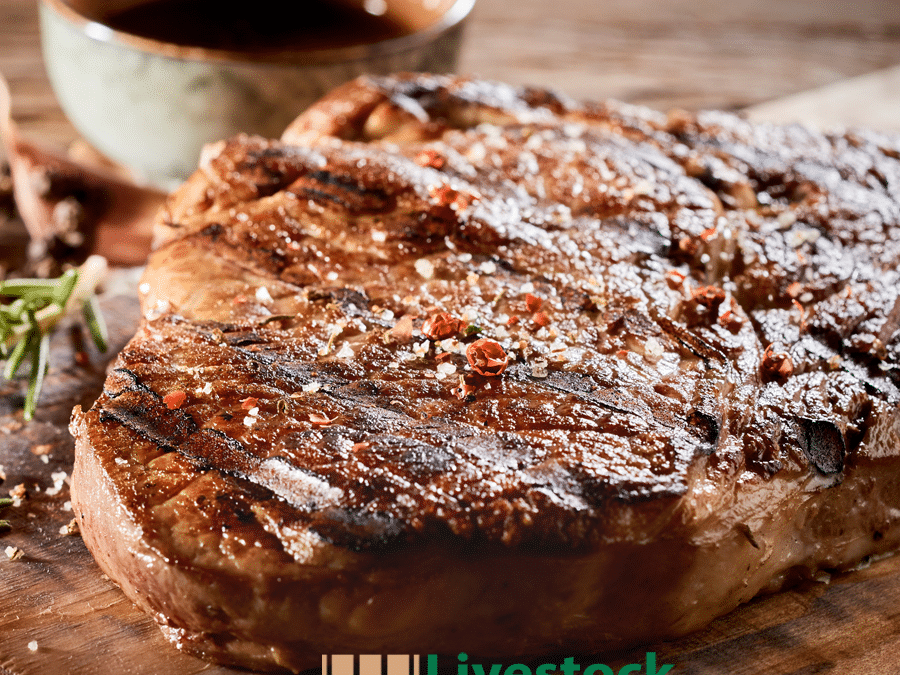So you are tired of paying $7.50 per pound for ground beef at the grocery store, or worse yet, having to eat turkey burgers at your weekend barbeque. You have some weaned calves or yearlings standing around and the willingness to feed them, so all you need now is a “finishing ration” from your local feed store, right? Sort of, but like most things, there is a little more to it than meets the eye.
First, you need a plan, so you are not disappointed with your investment in the end.
Step One: Have a Target
For most British or British X Continental breeds of cattle, you will need to plan on feeding them until they weigh between 1,150 – 1,300 lbs to achieve desirable carcass quality.
The average dressing percentage will be 62 – 64%, so a 1,200 lbs steer will result in 755 lbs of Hot Carcass Weight (HCW). On average, 65% of the HCW will be boneless, edible meat products, which would result in a 755 lbs carcass producing roughly 490 pounds of consumable meat. Finishing cattle at lighter weights will result in having lower HCW, fewer pounds of edible beef produced, and a leaner carcass with less marbling and smaller quality cuts of meat.
Step Two: Get a Date
With the rise of interest in personal beef finishing programs, many local packing plants that provide custom harvest options to livestock producers have been overrun with business. Before deciding to put any animal(s) “on feed,” you should first ensure you have a harvest date for your animal(s). This will allow you to provide the animal(s) you select to feed will finish at the correct time for your harvest date.
Step Three: Know Your Limits & Feed with Purpose
Just because your neighbor has the “best ration ever to finish a calf on” does not mean that it is the right ration for you or your selected animal(s). The most crucial factor in a successful beef finishing program is achieving a consistent intake level at or near the animal(s) maximum potential intake. The feed you use should be designed around what makes that possible for you. Rations will look different depending on whether you can feed once or twice a day. If the ration is offered free choice through a self-feeder or hand-fed, whether animals are kept on dry lots or pasture, and whether performance-enhancing additives such as ionophores are used.
The main goal of a feeding program to finish cattle should be to maximize energy intake while ensuring adequate delivery of all other required nutrients from the feed (i.e. protein, minerals, and vitamins). Although corn is an excellent source of low-cost energy in ruminant diets, some nutrition management factors are considered when increasing corn percentage in a ration. The primary energy source in corn is starch, which is rapidly fermented in the rumen.
When rations containing high starch levels are fed inconsistently to ruminants, digestive disorders such as acidosis, bloat, or rumenitis can occur. These disorders can reduce feed intake, impair the performance, and at times threaten the life of the animal. In general, finishing rations will contain 40 – 70% corn on a dry matter basis; however, a proper understanding of interactions between feeding management and diet formulation is essential in deciding how much corn to put in a ration. Livestock Nutrition Center’s Feed Sales Representatives specialize in helping customers make these decisions by evaluating their goals and available resources to determine the best program for your animal(s).
For those considering the prospect of finishing your beef, using these three simple steps to guide you will help ensure your efforts result in high quality, affordable beef for you and your family. Contact your local LNC Feed Sales Representative today for additional consultation and assistance.

Recent Comments